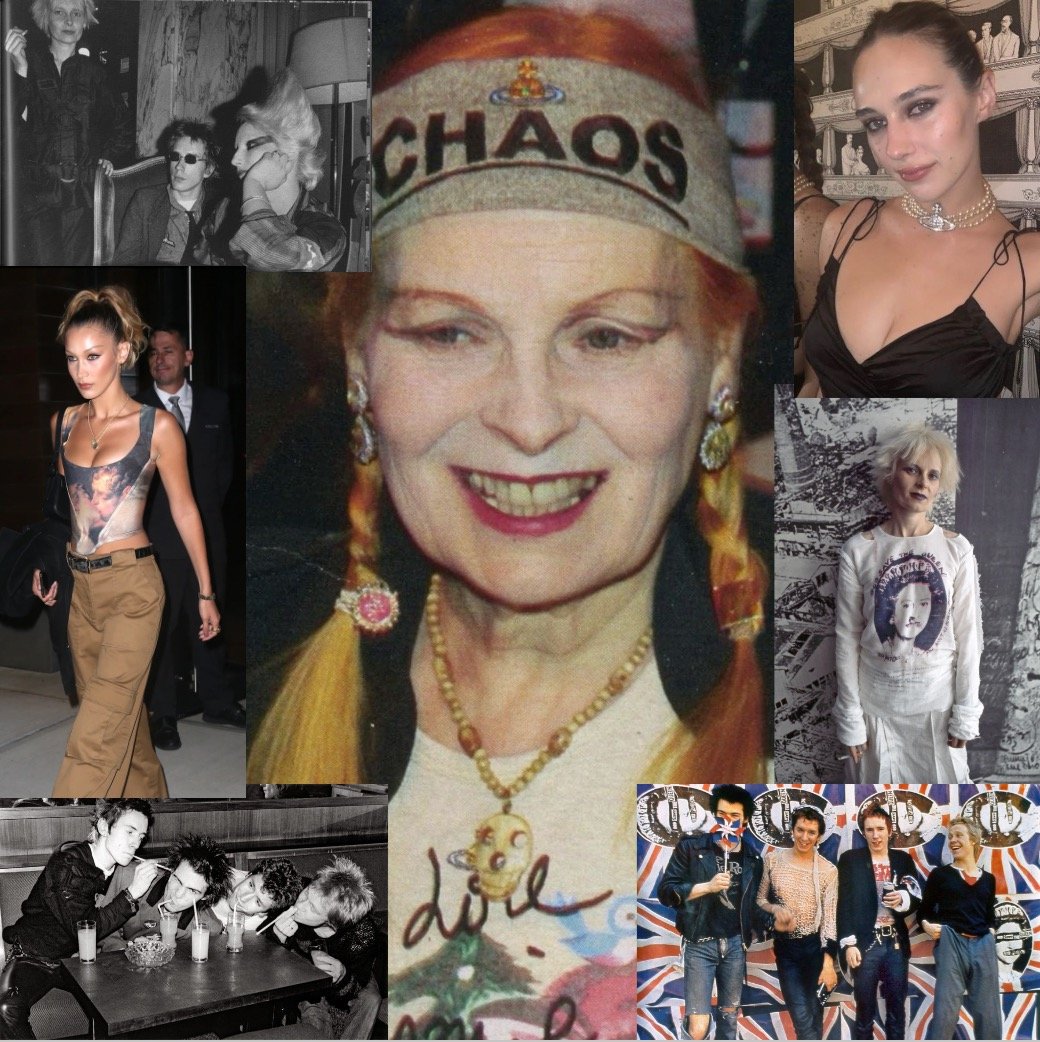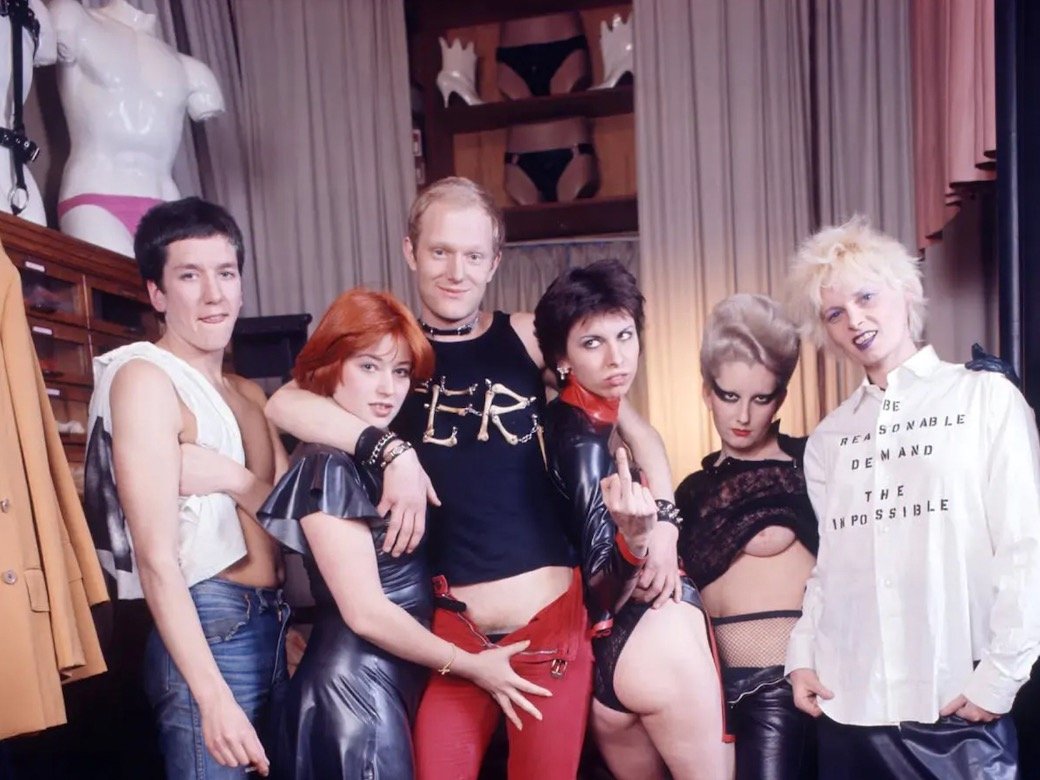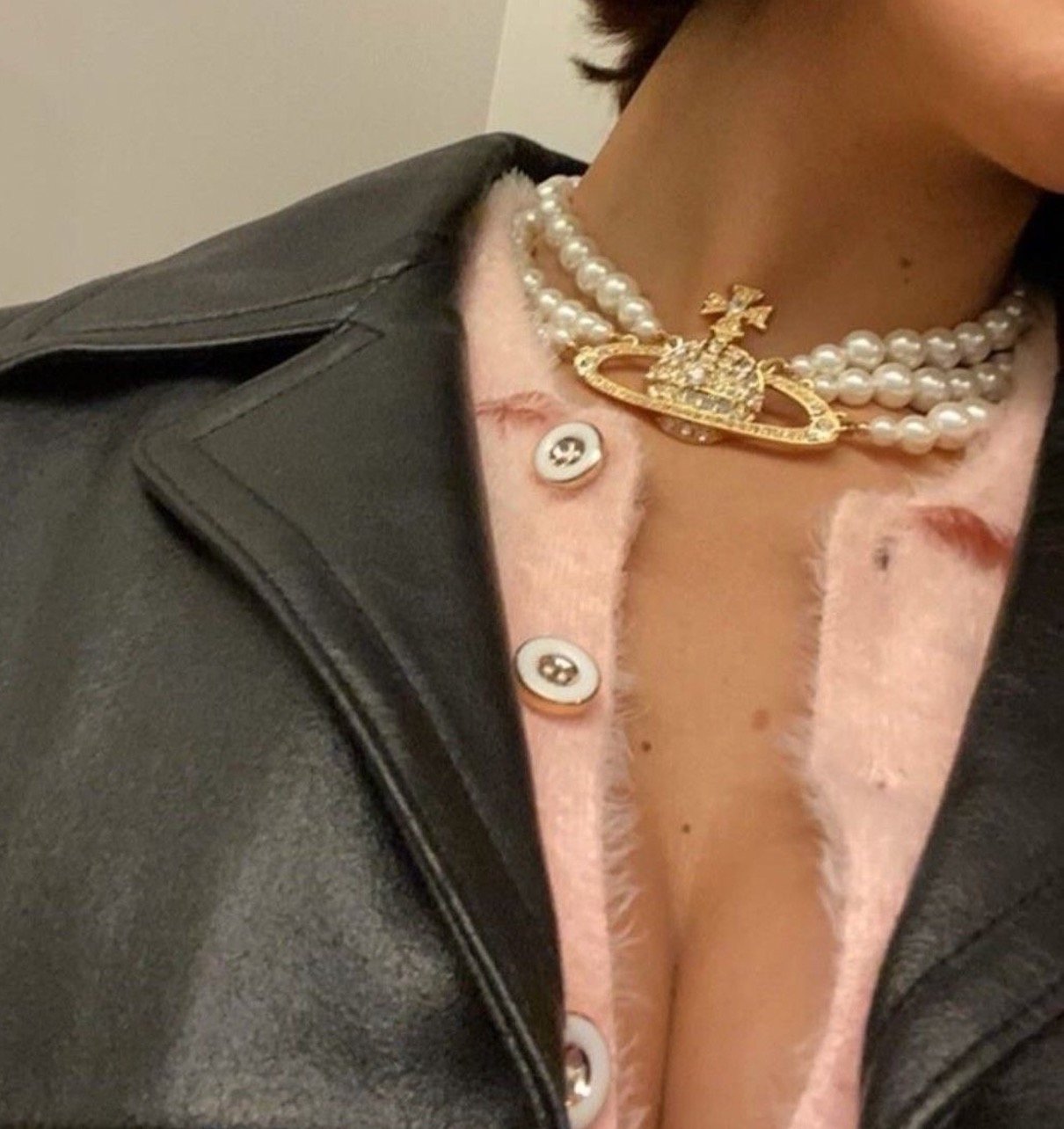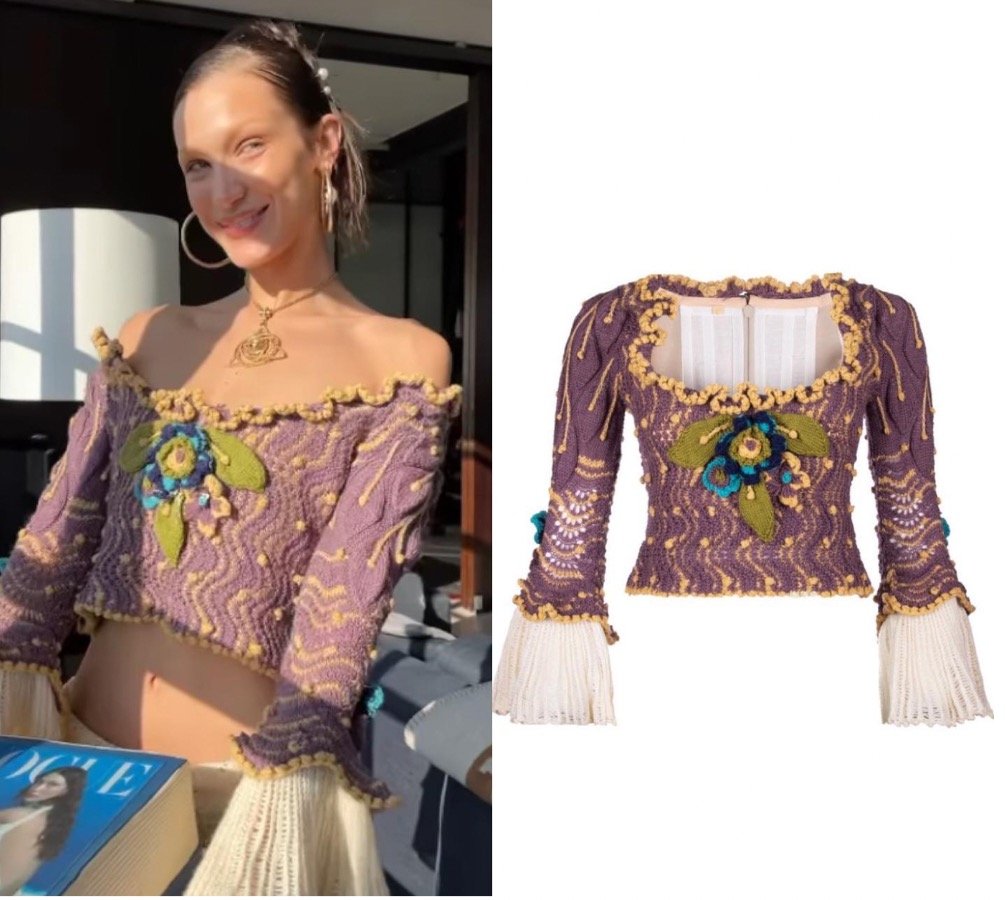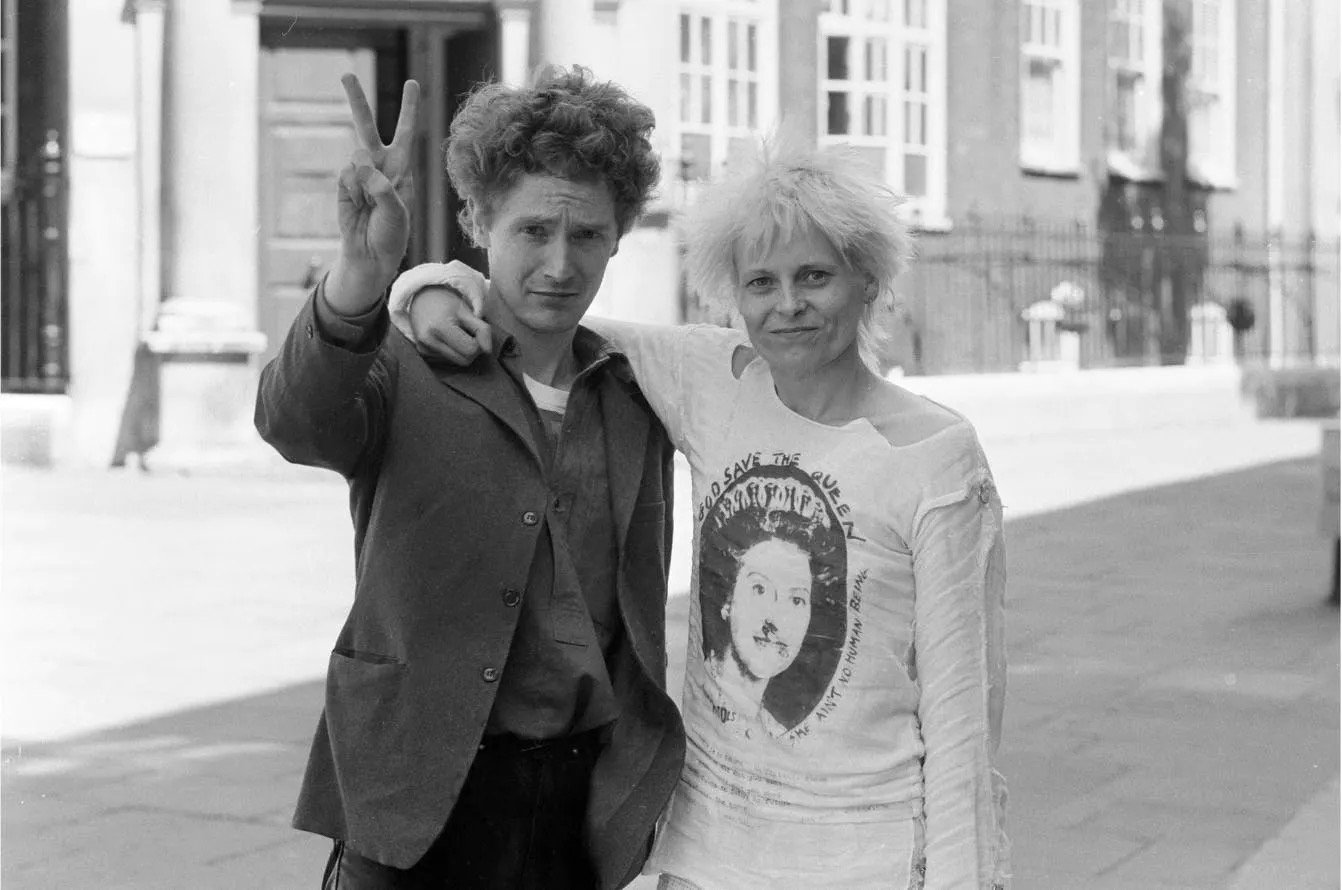Anarchy and Artistry: Vivienne Westwood, the Sex Pistols, and Aesthetic Activism
“Oh my god, I love your necklace! Where did you get it?” asks the freshman leaving their Math 16A lecture in Dwinelle. “Oh, I got it on Depop!” replies the wearer of the piece, unaware that the orb adorning their neck symbolizes the Punk revolution.
Today, Vivienne Westwood’s pieces cause both Depop girlies and archival connoisseurs to fiend. Though there is a deep history behind Westwood's designs and cultural impacts, we are not told this in the product description for the “Vivienne Westwood Triple Pearl Choker.” Westwood is a representation of the intersection between art and activism, notably incorporating the latter into her work – unafraid of the social status quo. Here at Cal, the confluence of creativity and a spirit of opposition is a notable dynamic. Westwood forged a relationship between fashion and music and had one of the most infamous punk rock bands of all time as her muse: the Sex Pistols.
While @riohojonot on Depop persuaded his followers to purchase a hat by declaring “WOMEN LOVE VIVIENNE YOU WILL PULL,” we love Vivienne for a lot more than her apparent matchmaking abilities. We love her for her pivotal influence throughout the punk movement in the 70’s. In 1970’s London at the Miss World Competition, feminists protested the repression and exploitation of their sexuality. This mass protest was not unusual for the time due to an economic crisis which led to high rates of unemployment, and consequently the separation of young people from their autonomy and dignity. London was overflowing with protests and angst, making it the perfect breeding grounds for a pop culture movement. Westwood and her partner at the time, Malcolm McLaren, took advantage of this moment to open their iconic store, “SEX,” in London. McLaren also happened to be the manager of the then-emerging punk band, the Sex Pistols – solidifying Westwood as the official outfitter of the band. Westwood’s designs helped create the image, and consequently the ethos of the band. “SEX” carried exciting (some say insulting) and avant-garde pieces which granted the wearer the lure of punk rebellion. The loudly out of place storefront on the prestigious King’s Road caught the attention of passersby and punk connoisseurs alike. The punk anthem “God Save the Queen” by the Pistols was banned from UK radio post-release as a result of its provocative, anarchist message. Rather than let the mainstream media control the narrative surrounding the single, Westwood created some of her most notable designs to date: the infamous t-shirt showcasing a distressed and tattered portrait of Queen Elizabeth II, as well as the “Destroy” tee, which featured a swastika alongside an upside down and crucified Jesus. These t-shirts became emblems of punk rebellion in coalition with the band. Like the song, the tees were banned from many stores across the country.
Activism is not solely weaved into the fabric of archival fashion, punk music is not shy to shake its listener to the level of consciousness its lyrics demand. Westwood and the Sex Pistols worked together to curate and create the image and message of rebellion in 1970’s London. “SEX,” the store, was a manifestation of the feared and unexpected in a sea of pristine and classy storefronts. I found a similar sensation of the unexpected here on Piedmont Avenue, also known as frat row. As I walked up to what exteriorly looked like another run-down frat house, I expected to enter and see more people dressing primarily as a means to not be naked and thus drowning in trendy fast fashion. However, as I walked through the door I was met with disco lights, drums, raspy vocals, and self-expression materialized as various forms of art, fashion being one of them. This event was put on by Rambler Magazine, a zine dedicated to crafting a community through live music shows. I felt this community as I watched crimped hair with mini braids scattered throughout flow and shake to the beat of the tatted drummer. I felt this community as a vintage slip dress, constricted by nothing but a weathered leather belt, swayed to the studded guitarist. It made me reminisce on what it must’ve felt like to listen to John Lyndon scream “God save the queen, the fascist regime, they made you a moron” while decorated in Westwood designs which embodied the exact same message. The cohesion between the music and the look of a band helps listeners hone in on the morals of both artists individually.
Westwood was, according to the fashion journalist Gabriella Onessimo, “A pioneer in bringing environmental and social activism to subversive clothing, Westwood’s interpretation of the punk aesthetic has always been a visual expression of the heretic lifestyle and the rhetoric of insurgents.” Within our Cal community, I have observed similar Westwood-esque expressions via an alliance between beliefs and garments. Students who are not afraid to stand out also tend to not fear voicing their opinions. Of course there are the exceptions, for example those who copy and paste a Letterboxd review for their discussion post on “Andrei Rublev,” proving to be adversary for the sake of being adversary rather than because of their own impressions. More generally, a student on Sproul using a megaphone to condemn corporations can often be seen clashing their leopard print pants, crochet knitted scarf, and poshmark purchased Doc Martens, yet still maintaining a strong and cohesive look.
I’m not going to sit here on a high horse and bash anyone who simply buys a Vivienne Westwood sweater because it's cute and trendy – I’ve been there! I’ve made the purchase based on what I saw around me, what I thought other people would think is cool, but it has never been as fulfilling as wearing an outfit I have artistically curated in collaboration with these historic designers. The fashion it-girls of today, Bella Hadid and Devon Lee Carlson to name a couple, are often seen cladded in vintage Vivienne Westwood corsets and kilts – and it makes me question whether they know the story behind the pieces they so gallantly strut. Or rather, if those who are influenced to buy Vivienne Westwood because of Bella Hadid know the purpose embedded in the boning of that corset. Would this knowledge deter them from buying the dupe from Edikted for the sake of a trend? When the instagram account @closetofbellahadid posts Hadid in an archival fall 1994 Museum on Liberty crochet corset, it is not accompanied by a caption explaining Westwood’s inspiration and vision for what the piece has to say – instead, it says “sold out,” furthering the notion to onlookers that fashion is solely to be purchased, and not to be appreciated and consumed holistically. All of the content which involves Westwood on ‘Instagram, Depop, Grailed, Poshmark, and Pinterest makes it clear that these trends of corsets and pearl chokers are dependent on the trend cycle’s nature of persuasion to purchase something for the sake of fitting in. It is seemingly uncommon that a modern purchaser is buying with the purpose of appreciation for the studded, buckled, rock n’ roll, tattered history of Vivienne Westwood.
Berkeley as a school and city has a reputation for rebellion, hippies, and protests galore, yet this spirit of insurgence is somewhat repressed when experienced through the lens of 2023. Perhaps it is due to the Greek-freshman bubble I have entered into, but I observe my peers stepping away from protests, flinching when a representative of the DSA reaches their arm out with a flyer, and failing to condemn the destruction of people’s park at the hands of our university. And yet, it is us, the students parading down Piedmont on a Friday night, who uphold the value of the Westwood archival pieces through our yearning for and propulsion of trends. A majority of those wearing a corset today are not aware that the reason for the mass production of the undergarment among fast-fashion companies is owed to Westwood’s pioneering. Vivienne Westwood knew that shouting the objectives of the punk movement would ring in more ears in a joint effort with the Pistols, which is arguably rooted in the same philosophy of a shouting person on Sproul. All to say, I observe the true legacy of Westwood as embodied by those who are not afraid to use a megaphone at 1pm on a Tuesday in front of a seemingly uninterested student body – who simply use the pavement as a route to class or GBC. The nonconformist atmosphere on this small stretch of campus is more appreciative of Vivienne Westwood’s efforts than @riohojonot on Depop.
Work Cited
Garber-Paul, Elisabeth. “How London Punks Changed Fashion Forever.” Rolling Stone. Rolling Stone, May 24, 2022. https://www.rollingstone.com/culture/culture-features/sex-pistols-fashion-punk-legacy-1355610/.
Garces-Bovett, Natalie. “Life in 1970s Britain.” Life in 1970s Britain | Bush Theatre. Bush Theatre. Accessed April 25, 2023. https://www.bushtheatre.co.uk/bushgreen/life-in-1970s-britain/.
Onessimo, Gabriella. “Vivienne Westwood, Sex Pistols, and the Origins of Punk Fashion - Pistol Hulu TV Show.” L'Officiel USA. L'Officiel, April 8, 2023. https://www.lofficielusa.com/fashion/vivienne-westwood-sex-pistols-punk-fashion-history.

